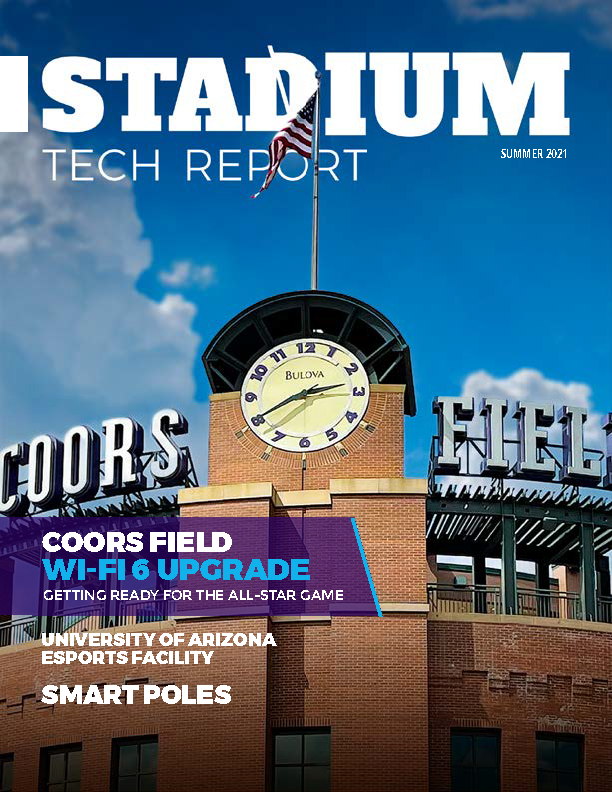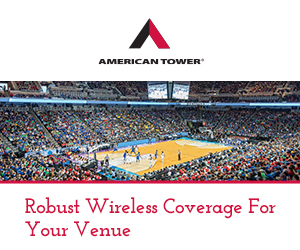In case you are wondering why you won’t be able to watch the Super Bowl live on your phone while you’re at the game, Jon Brodkin at Ars Technica has a good story about why the NFL is blocking streaming video inside MetLife Stadium. To quickly recap, NFL CIO Michelle McKenna-Doyle told Brodkin that streaming video takes up too much bandwidth, and that it could hamper overall wireless communications on game day, so the league is proactively blocking live feeds at the game.
While I agree with her assessment of the situation and the solution (blocking live video), I don’t agree with her claim that the “vast majority of our fans want to watch the game on the field, watch the replays on the jumbo board, and participate in the event more than they want to be checking their phone,” and I’m surprised that Brodkin didn’t put up more of a challenge to this claim. Her follow-on claim that the league is doing the “vast majority” a favor by blocking the few video viewers rings hollow and reminds me of the old “data hogs” arguments the carriers used to use against people who were exercising their rights to their unlimited data contracts. My point: don’t blame fans who want to watch live video as being the people ruining the network for everyone else. Put the blame where it deserves to be, namely on the in-stadium networks that can’t yet handle the demands of a large crowd that wants video at the game.
We’ve talked before about why people want to stay connected while at the game. It’s not for everyone, but the desire to be online in your stadium seat is way more widespread than just a few people. Trolls will comment and say “watch the damn game and shut up” but plenty of real sports fans want the replays and closeups they are now accustomed to on TV. And not every seat has a good view of the big screens inside the stadium, and many times those things are showing ads, not replays. Then there is the time standing in line for a beer or bathroom. Why shouldn’t you be able to watch the game you are paying big bucks to be at, instead of being penalized because the stadium doesn’t have enough beer vendors or urinals? How about watching a replay while the game is in one of its lengthy TV timeouts? Or catching up on a play that you missed during halftime? Isn’t just having to listen to Bruno Mars punishment enough?
It will be interesting to see what the user statistics are like when the San Francisco 49ers’ new Levi’s Stadium opens this year, if its much-touted network delivers as hoped. The cynic in me is also guessing that when the NFL finally gets its digital video strategy figured out — meaning they clear the rights contracts and find a way to start charging fans more to watch more video online — the stadium network problems will suddenly be solved, and you’ll be able to watch all the live video you can afford.
We’ll be the first to acknowledge that putting networks in stadiums isn’t easy. Our recent Stadium Tech Reports series is designed to profile those in the industry who are trying to bring a quality wireless experience to their fans, so that others may follow. Already, we see places like Barclays Center and Gillette Stadium pushing the envelope when it comes to features like streaming video. In many ways, getting there is a long road that we’re just at the start of. If there is one bit of analysis I can provide after covering this field for the past 3 years, it’s that I don’t think anyone has gotten the stadium-network thing completely figured out just yet — and that any network put in over the past couple years is probably already in need of an upgrade, due to user demands already exceeding capacity. And that’s before most places are even thinking of providing live video feeds.
So sure, go ahead and block live video if it’s going to crash the network. But stop saying it’s something that just a few fans want, because there’s no proof behind that idea. Until the league and carriers like Verizon offer up real data on stadium network usage, there’s no way of telling exactly how many people at a game want to watch video, and whether it’s just for a replay or two or if they want a constant stream going at their seat. I’d be willing to bet more than a pint with McKenna-Doyle that if she polled an average NFL crowd and asked them if they’d like replays at their seats, a “vast majority” would vote for replays on their phones, and not in favor of settling for jumbotrons and PA announcers as she claims. So again, if you need to block the video, fine, but put the blame for the action on the network’s lack of capacity, and not on the fans who are just trying to enhance their own experience.







[…] also a hot mess of digital rights once fans get inside stadiums, an issue exacerbated by the fact that most NFL stadiums simply don’t yet have a wireless […]